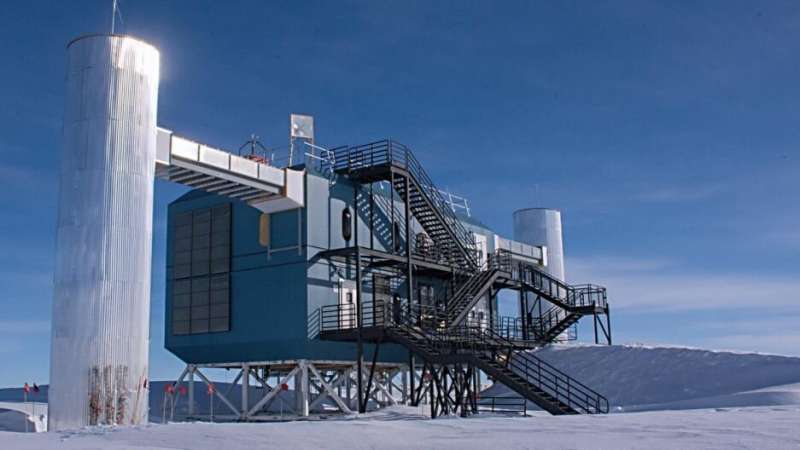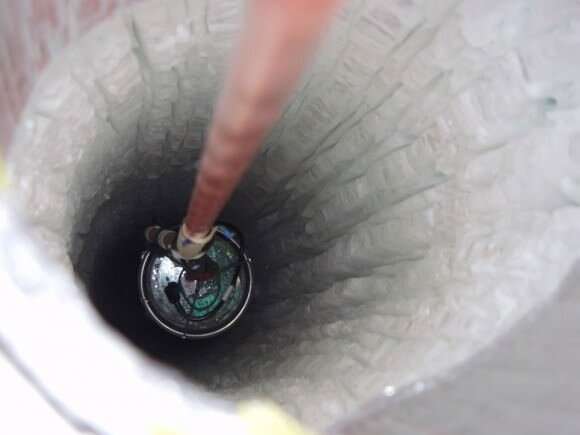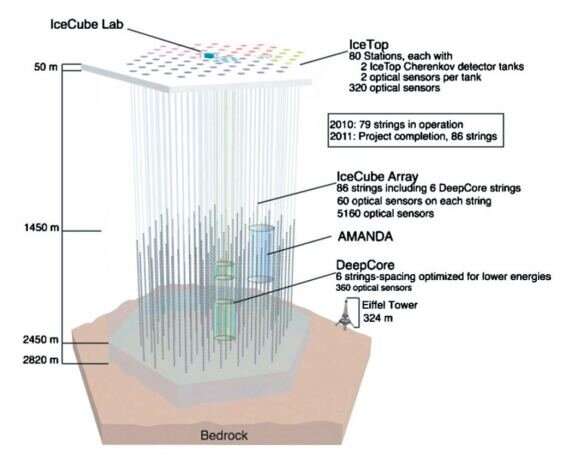Searching for dark matter inside the Earth

Dark matter remains one of the greatest mysteries in science. Despite decades of astronomical evidence for its existence, no one has yet been able to find any sign of it closer to home. There have been dozens of efforts to do so, and one of the most prominent just hit a milestone—the release and analysis of eight years of data. The IceCube Neutrino Observatory will soon be releasing results from those eight years, but for now let's dive in to what exactly they are looking for.
Theories abound about what dark matter actually is, and several of them focus on the idea of Dark Matter as a type of particle. The most prominent of those is the Weakly Interacting Massive Particle (WIMP). The physics behind WIMP are one of the primary drivers of the IceCube Experiment.
A neutrino detector might seem like an odd way to look for WIMPs, but the physics behind it is well understood. When traveling through large clumps of "standard model" matter (i.e., what we think of as "normal" particles), WIMPS could lose energy and eventually become gravitationally bound to the body they are traveling through. This would be the case with planets, or with the Sun. So the center of the Earth could harbor a large, unseen mass of weakly interacting particles.
It would be impossible to directly detect any such grouping of WIMPS. However, scientists could see tell-tale signs by measuring a proxy particle—neutrinos. Neutrinos, which themselves are notorious for being difficult to detect, result from some theories where WIMPs self-destruct by interacting with a standard particle. Since they are so difficult to pin down, the neutrinos that would result from this process in any mass of WIMPs in the center of the Earth would almost certainly be able to make it through the mass of the Earth and out into space.
But along the way, they might get picked up by a neutrino detector, like IceCube. Based at the geographic South Pole, IceCube consists of 86 strings of digital optical modules containing 5160 individual optical sensors that will detect a type of light created by Cherenkov radiation when any neutrino interacts with another particle. By triangulating the brightness and longevity of the light pulse, scientists can then backtrack the speed and direction that the neutrino was traveling.
Given the finicky nature of the equipment and its particle of interest, noise reduction is a key component of IceCube. Part of that strategy is done via isolation—not only is the detection array based at one of the most isolated spots on Earth, it also is buried under 1450m of ice and spans almost a vertical kilometer in depth.
The other part of that strategy is based on simulations, particularly to estimate and eliminate background noise. The IceCube research team, which consists of scientists from all over the world, use simulations of background noise in an effort to eliminate false detections. In addition, they are able to eliminate some source of neutrinos not associated with WIMPs, such as when the system detects a neutrino that is traveling towards Earth's core rather than away from it. Most likely these types of neutrinos are caused by "atmospheric neutrinos" which are formed when cosmic rays hit Earth's atmosphere.

All of this effort is toward one relatively simple task—trying to figure out what exactly WIMPs are. In particle physics language, this means trying to put constraints on their "mass." As with many things in particle physics, it is measured slightly differently than by simply putting something on a scale. Measured in "electron volts," the researchers looked at potential masses between 10GeV (giga electron volts) to 10 TeV (tera electron volts). These ranges include masses that are orders of magnitude "heavier" than other well known subatomic particles, such as the Higgs Boson (125 GeV) or electron (.511 MeV).
Another characteristic of WIMPs the research was trying to narrow down is the "annihilation rate" i.e. how often WIMPs actually destroy themselves and create a neutrino that IceCube can then detect. Using some advanced statistical analysis, the researchers came up with a a statistical probability for different ranges of the likelihood of annihilation as well.

Even with all the work done so far, the final results haven't been fully analyzed yet. So what all these results could mean for the search for WIMPs is still an open question. The IceCube team expects the results to be "released soon." What's more—the data they analyzed currently was only from 2011—2018, so there are three more years of data that have yet to be included in this analysis.
All the work put into teasing out what exactly dark matter is could be worth it. After all, it remains one of the biggest unexplained phenomena in particle physics. And the only way scientists will be able to understand it fully is by collecting data at instruments like IceCube for years and years to come.
More information: Giovanni Renzi, Search for dark matter from the center of the Earth with 8 years of IceCube data, arXiv:2107.11244v1 [astro-ph.HE] arxiv.org/abs/2107.11244
Provided by Universe Today





















